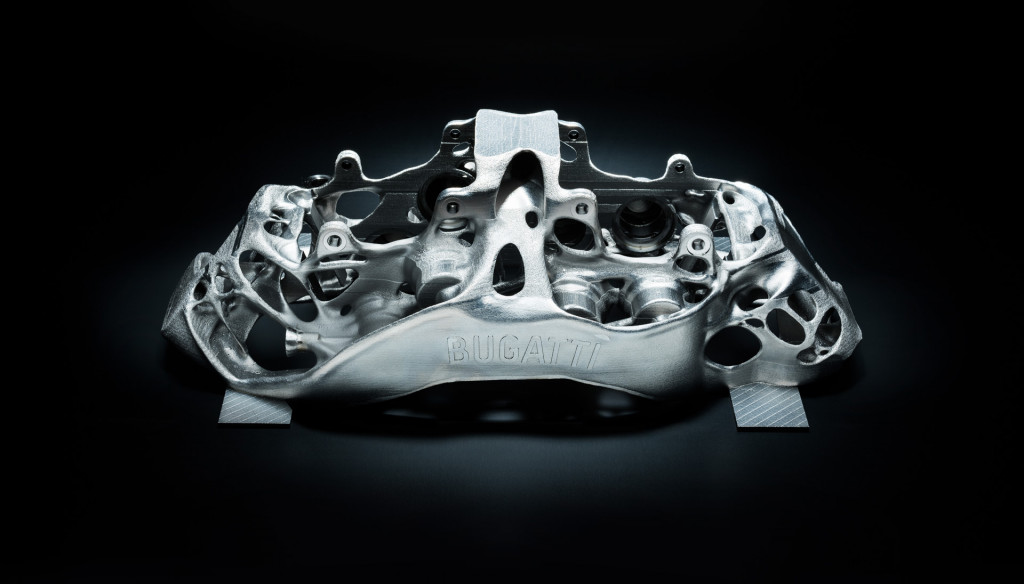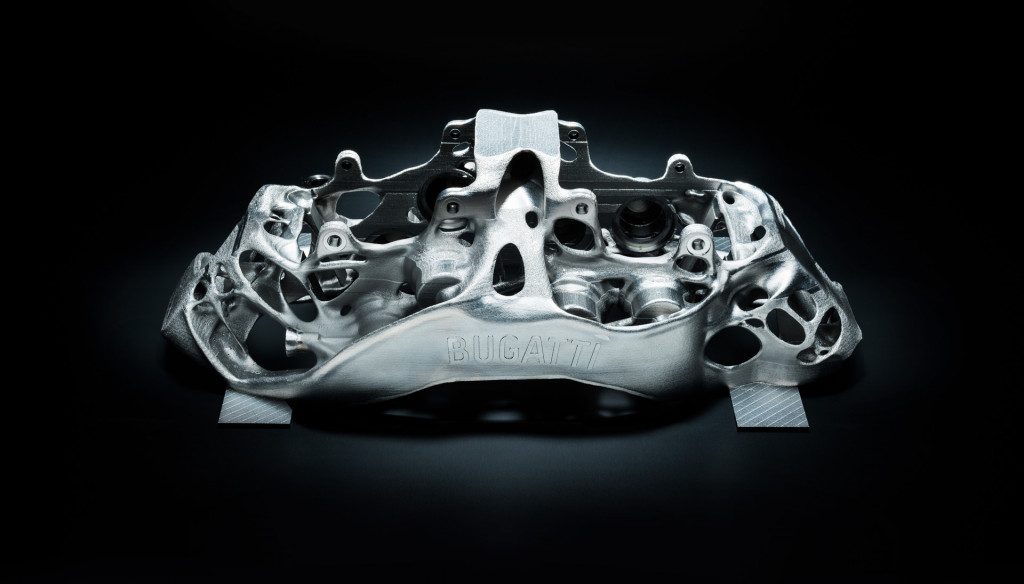
Latest News
February 21, 2018
Volkswagen subsidiary Bugatti Automobiles has produced what it claims is the single largest 3D-printed vehicle component made of titanium – an 8-piston brake caliper for the front axle of the Chiron sports car. The 16-in., 6.4-lb. component is 40% lighter than the existing part made using traditional casting methods.
“Vehicle development is a never-ending process. This is particularly true at Bugatti,” said Frank Götzke, head of new technologies in the technical development department of Bugatti Automobiles S.A.S. “In our continuing development efforts, we are always considering how new materials and processes can be used to make our current model even better and how future vehicles of our brand could be designed.”

The forged part is made from aluminum alloy with titanium pistons, and according to the company is the largest such caliper used on a production vehicle. The printed version uses aerospace-grade titanium that can withstand a force of 275 lbs. on a square millimeter without cracking. Forging a part out of the same material would have been nearly impossible because of the strength of the metal.
The caliper was developed with Hamburg-based Laser Zentrum Nord.
“Laser Zentrum Nord is one of many scientific institutes with which we have developed very good cooperation over the years,” Götzke said. “Thanks to the large number of projects completed, mainly for the aviation industry, the institute has comprehensive know-how especially in the field of titanium processing and offers mature technology.”
It took 45 hours to print the caliper using a large selective laser melting machine that includes four 400-watt lasers. The part is then heat treated and smoothed using both physical and chemical processes. The caliper will be tested for several months before being installed in a vehicle.
Bugatti also plans to print a cover for the windshield wiper that would be half the weight of a conventional aluminum part.
Source: Bugatti
Subscribe to our FREE magazine, FREE email newsletters or both!
Latest News
About the Author
Brian Albright is the editorial director of Digital Engineering. Contact him at [email protected].
Follow DE





